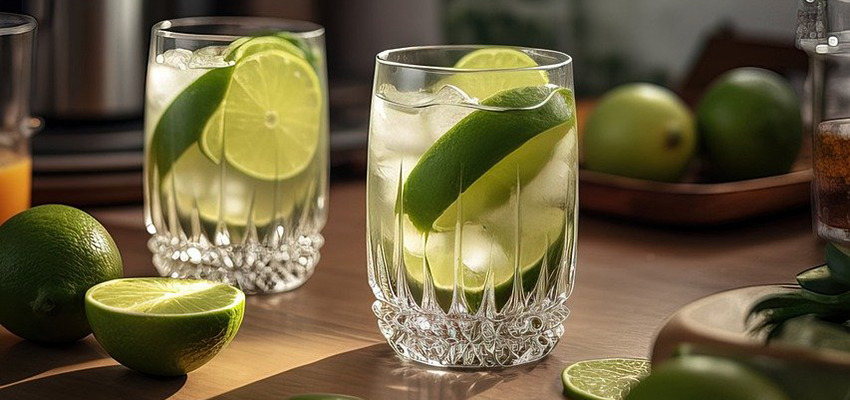The "Caipi" (Caipirinha) is a popular cocktail and is also favoured in the hot version at the Christmas markets as an alternative to spiced wine and the like, especially by young people.
Traditionally, Caipirinha is mixed with cachaça (a sugar cane spirit) crushed limes, cane sugar and crushed ice.
The limes that give the refreshing cocktail its aroma were examined more closely by the Chemical Veterinary and Food Inspection Office (CVUA) in Stuttgart. The regulatory inspectors wanted to know how the use of different lime qualities affects the party drink in terms of pesticide residues. So from the middle of 2021 to August 2023, the official laboratory was always busy mixing.
In addition to limes with no indication that the peel was fit for consumption, those with the indication "peel fit for consumption" and also organic limes were used to prepare the cocktail.
The result was clearly in favour of the organic limes. On average, 4.9 mg/kg of pesticide residues were found in cocktails prepared with fruits with treated peel. If the peel was labelled "suitable for consumption", only 0.19 mg/kg residues were found on average. Only in organic limes could only 0.003 mg/kg of peel treatment agent residues be detected.
Post-harvest treatment agents such as imazalil, thiabendazole, orthophenylphenol and pyrimethanil are used to prevent mould infestation and improve the storage life of the citrus fruits.
The use of thiabendazole must also be declared for limes on a notice or sticker on the product. In contrast to other citrus fruits, the declaration of the other agents used in the treatment of limes is voluntary. The absence of a declaration therefore does not mean that no peel treatment has taken place.
If the producer wants to make this clear, he must make a statement such as "peel untreated after harvest" or "peel suitable for consumption". If you find the indication "untreated", you can assume that the fruits have not been in contact with fungicides either before or after harvest. In organic cultivation, the producer is not allowed to carry out any such treatment anyway.
In addition, citrus fruits can be preserved with a layer of wax. The waxing must also be declared. It can usually be recognised by the strong gloss of the peel.
By the way, there are no legal regulations on which limes may be used for mixing cocktails. So it's best to ask the bartender or grab the shaker yourself for your friends. You can find the "official" recipe and (in German) here.
YOUR PLUS: The AGROLAB GROUP's residue laboratories test all tropical fruits for pesticide residues and especially for peel treatment agents.
Author: Dr. Frank Mörsberger

 Contact
Contact

 Contact
Contact Career
Career